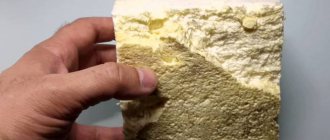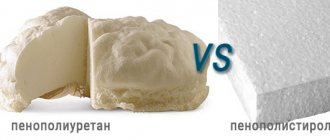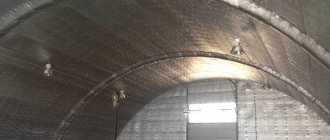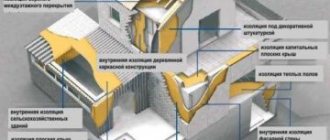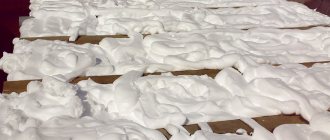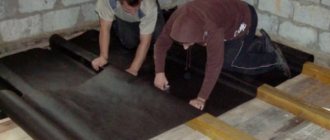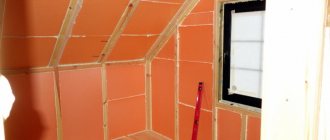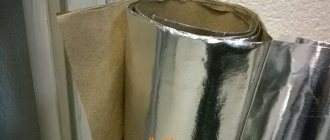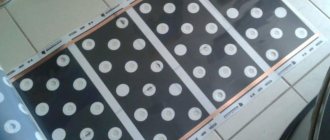High-quality insulation is the key to comfortable living. There are many different options for thermal insulation materials. Modern technologies have helped scientists develop a new generation substance called polyurethane foam. Its use becomes more popular every year. Spraying polyurethane foam can be done independently; you just need to study the technology for carrying out the work and acquire the necessary equipment.
This spraying is becoming more popular every year.
Methods of using the substance
Polyurethane foam can be applied both outside and inside. The substance has a number of positive properties, so it is used more and more every day. But before you start work, you need to familiarize yourself with the negative aspects that may arise during the process of applying a thermal insulation coating.
Thermal insulation is often carried out by spraying a substance onto the surface. Polyurethane foam has good adhesion, so upon contact with the wall it increases in size and hardens.
During expansion, the material fills even the most microscopic cracks, creating an airtight coating that prevents cold from penetrating through the walls and roof.
In this video you will learn the pros and cons of spraying:
Very often sprayed polyurethane foam is used at the construction stage of a structure. The substance is poured into molds, and the resulting parts are used after complete hardening.
Read also: types of polyurethane foam and polyurethane foam insulation of houses.
Another filling option is to fill voids where spraying cannot be done. For example, this method is used if you need to get rid of the empty space between the wall and the finishing material.
Polyurethane foam is obtained by combining liquid polymers - polyisocyanate and polyol. The components are mixed without oxygen before spraying. When exposed to carbon dioxide, the components foam. The finished composition moves through hoses into a spray gun and is applied to the surface under high pressure.
FACADE IN A FUR COAT
Proper insulation of external walls protects living spaces from freezing and dampness and provides a comfortable microclimate. Having a low thermal conductivity coefficient and a closed cellular structure, polyurethane foam is able to remove the dew point from the enclosing structures into the outer layer of insulation. He is not afraid of either rain or snow.
The exterior finish can be anything: you can apply decorative plaster to polyurethane foam, lay facing bricks, or simply cover the house with siding or clapboard. By spraying polyurethane foam onto an old building, its energy efficiency can be increased by more than 60%.
If external insulation is not possible, the walls are insulated from the inside. Wood panels, drywall or other finishing are laid on top of the foam layer indoors.
Sprayed thermal insulation is applied using special equipment, so you need to invite specialists to carry out the work.
From the cold and rain
It needs to be protected from the cold not only around the perimeter, but also from above, so the attic also needs insulation. To protect from above, it is enough to insulate the interfloor ceilings. By foaming the roof slopes, you can turn the attic space into a warm attic. Spraying is carried out from the attic side: all cracks, voids and the space between the rafters are completely filled.
The result is a monolithic layer of insulation over the entire roof. But polyurethane foam can also be sprayed externally: it is applied to any sheet material attached to the rafter structure. Then a counter-lattice under the roofing material is formed on the polyurethane foam layer.
Material characteristics
Insulation with polyurethane foam spraying is in demand not only in industrial premises, but also in residential buildings. The substance is often used for thermal insulation of house floors, partitions, walls and floors. It should be noted that the material has soundproofing properties and also protects the room from freezing and moisture.
Positive traits
Polyurethane foam has a number of advantages, thanks to which it is considered one of the highest quality thermal insulation materials. The main ones:
- The ability to firmly adhere to any surface - wood, metal and concrete.
- Low thermal conductivity helps retain accumulated heat during internal insulation. If the coating is carried out outside, the substance prevents the penetration of cold air masses.
- The material carefully fills the cracks, promoting sound insulation. When treating the roof from the inside, the material muffles the noise of rain, which is very important for rooms located in the attic.
- Prevents the appearance of corrosion on metal structures, protects materials from the negative effects of the environment.
- It is possible to process complex structures that cannot be insulated with conventional materials.
- The substance is classified as low-flammable. This property is due to the presence of polyol substance A in the composition. Combustion is possible at 450-500°C.
- The low weight of polyurethane foam allows it to be applied to any surface without fear of making the floors heavier. After hardening, the thermal insulation material will give the structure additional rigidity.
- After treatment with polyurethane foam, a seamless surface is obtained. This cannot be achieved using other insulation materials.
- The substance is easy to apply, quickly expands and hardens. The thermal insulation procedure will take 1-2 days.
- Due to the moisture resistance of polyurethane foam, when using it there is no need for additional fastening of a vapor barrier coating.
- Resistant to mold, rot, insects and rodents.
- Well-known manufacturers provide a guarantee on the material for up to 50 years. However, with proper external finishing, the insulation will last much longer.
Negative sides
It is impossible not to mention the disadvantages of the material. All shortcomings that may arise are due to independent work on thermal insulation and further operation of the insulation. Some of them:
- The main disadvantage of this type of thermal insulation is its high cost: renting or purchasing special equipment for applying the substance is expensive.
- During work, you must wear a special protective suit, as well as a respirator. The latter is needed to protect the respiratory tract from harmful vapors emitted by the substance. It is imperative to protect all areas of the skin, eyes and mucous membranes.
- If a person does not have experience working with polyurethane foam, the thermal insulation process can take a long time, and without a guarantee of quality.
- The material is non-flammable, but upon contact with fire it smokes heavily, releasing many substances harmful to humans.
- If sprayed polyurethane foam is applied to the outside of a building, it must be covered with finishing materials. The absence of the latter is fraught with rapid destruction of the substance under the influence of ultraviolet radiation.
Areas of application of polyurethane foam
Polyurethane foam is used in the production of soft toys, car interior parts, refrigeration equipment, and is even used in contact with food products. All this speaks about the environmental friendliness of the material. In addition, polyurethane foam does not mold, is not susceptible to fungal formations, and, thanks to its microcellular rigid structure, is not comfortable for insects and rodents to live in.
Despite the rather high initial investment, PPU thermal insulation pays off within 2-3 years.
Process Basics
Many believe that it will be cheaper to insulate your home with polyurethane foam with your own hands. But in practice, everything turns out to be not so simple, because you need to have not only theoretical knowledge, but also practical skills. In addition, specialized equipment and materials are required. Before starting work, you should properly configure the equipment.
When a person understands the operation of the system, but does not have his own equipment, he can rent it, but it is quite expensive. In this case, it makes sense to invite a specialist with equipment who will quickly perform thermal insulation procedures, saving the owners from many problems.
If a person decides to independently carry out the insulation process, then he needs to take into account some features. Among them:
- Thermal insulation of polyurethane foam can be carried out both in a finished house and during the stages of its construction. Spraying of the substance is carried out over the entire surface or on its individual parts. As needed, cavities are filled with polyurethane foam.
- When carrying out insulation work, the region of residence should be taken into account. The thickness of the layer of substance directly depends on specific climatic conditions.
If you decide to apply this mixture yourself, you should not forget about some rules
Model variety
Today, several Russian manufacturers offer their installations for spraying polyurethane foam and components for this process. Depending on the price, technical characteristics and needs of their market, many companies choose a suitable installation and begin to offer this service in their region. Although, I repeat, the demand for polyurethane foam insulation is growing and, according to my observations, will continue to grow for a long time.
As for the cost of equipment for polyurethane foam, it, of course, varies depending on the configuration and features of the installation. You can purchase a minimally equipped installation with a dispenser for your own needs to insulate your home, or you can do this as a business - the goals are different, and, accordingly, the equipment is different.
The model line of Graco brand installations for spraying polyurethane foam and polyurea is in relatively even demand, although most consumers recognize the price as high.
Stages of thermal insulation
The process of insulation with polyurethane foam should include a number of sequential actions. The work is carried out according to the following algorithm:
- Before applying the substance, you need to prepare the surfaces: remove the old unstable coating from the walls (crumbling plaster, peeling paint, etc.).
- After carrying out the cleaning operations, you need to build a sheathing; it is often made from metal profiles or wooden beams. The thickness of the guides depends on the future thermal insulation layer.
- Using lathing you can level the surface. The structure must be mounted on the wall using a level and plumb line.
- The next step is to apply PU foam with a special gun.
- The density of spraying of the substance should be adjusted on the equipment. If it is necessary to apply a thin layer, spraying should be carried out in small jets. In this case, the lathing must be made of thin parts, because it determines the thickness of the layer.
- Spraying the substance should begin at the bottom of the wall, applying the material between the parts of the sheathing.
- The polyurethane foam is sprayed in a thin layer, which immediately becomes voluminous. If this thickness is not enough, it is permissible to apply the substance a second time.
- After the polyurethane foam has hardened and the finished coating has been leveled by cutting off the protruding elements, the finishing material (lining or siding) can be installed. If thermal insulation is carried out outside the building, brickwork can be laid on top or the surface can be plastered.
- If you plan to apply plaster, the walls should be covered with a mesh that is attached to the guides. Then the cement-sand mortar is applied using the throwing method. After the latter has hardened, you need to treat the top with any leveling mixture that will easily adhere to the base.
Insulation by spraying polyurethane foam is a modern method of thermal insulation of a room. If processed correctly and all conditions are met, the finished coating can last for decades. The quality of materials and the experience of the craftsman have a significant impact. It is advisable that the procedure for applying the substance is carried out by an experienced specialist who will do the job quickly and efficiently.
What is good about PPU polyurethane foam?
Polyurethane foam is capable of performing a full range of thermal insulation tasks on construction sites of any complexity. At the same time, prices for polyurethane foam are affordable for almost any construction site.
Another positive quality of polyurethane foam is its ease of use and high speed of work. Special equipment makes it possible to apply heat-insulating mixtures over large areas with a minimum of maintenance personnel, and in a very short period of time.
Insulation of house walls with polyurethane foam.
Geometry and surface material do not matter. It is important to note that PPU foam has excellent adhesion (adhesion) to almost all building materials. Wood, brick, glass, metal, concrete - all this is suitable for applying polyurethane foam without additional fixation. When sprayed onto an insulated surface, the material follows its relief, so polyurethane foam can be applied to curved bases, for example, domes, pipes, tanks, corrugated sheets, etc.
